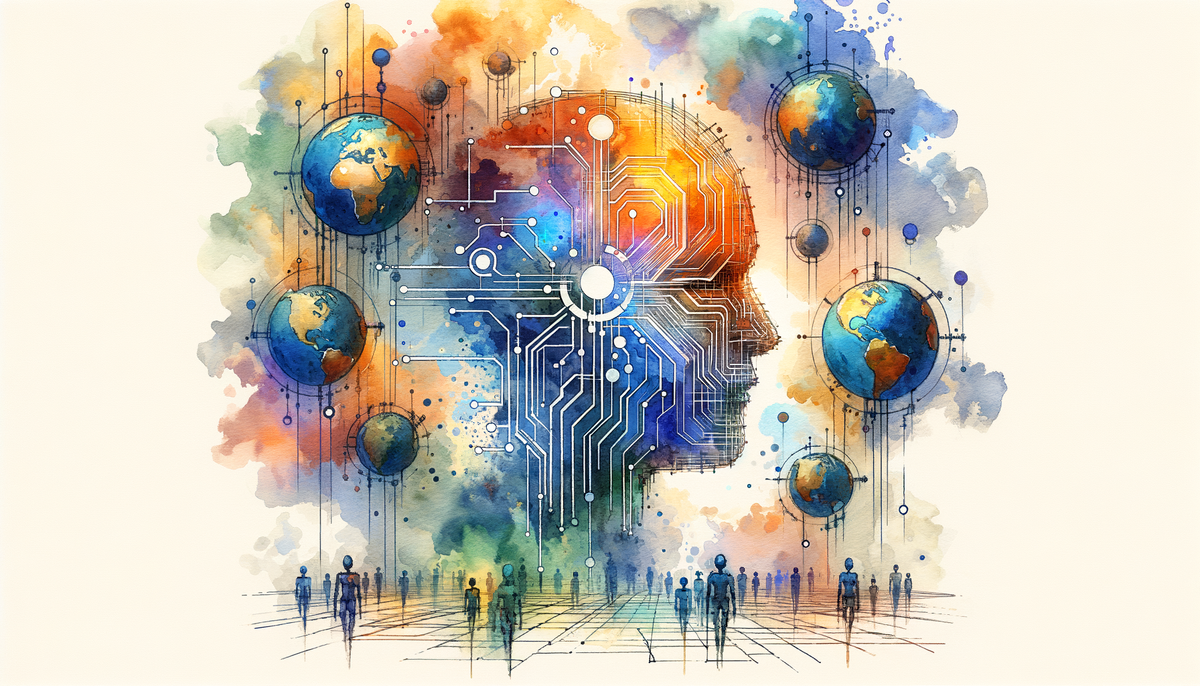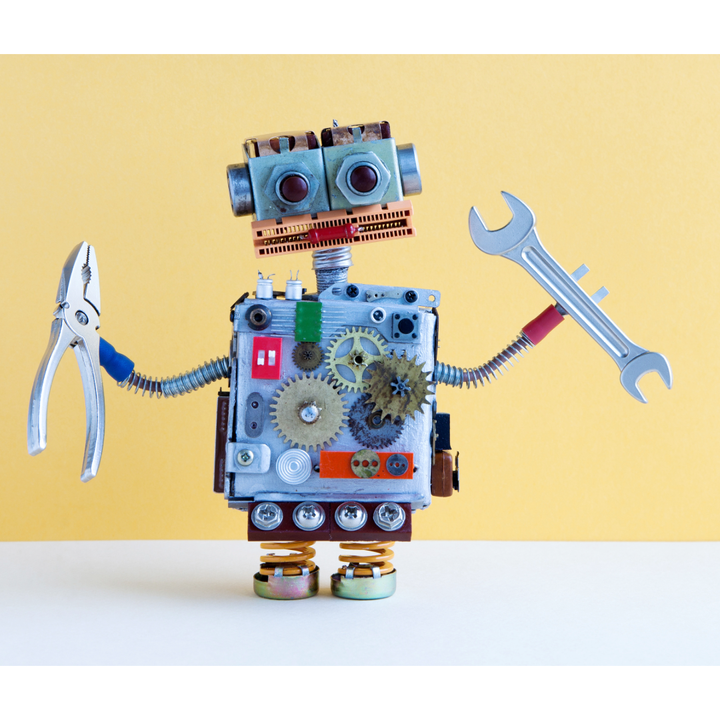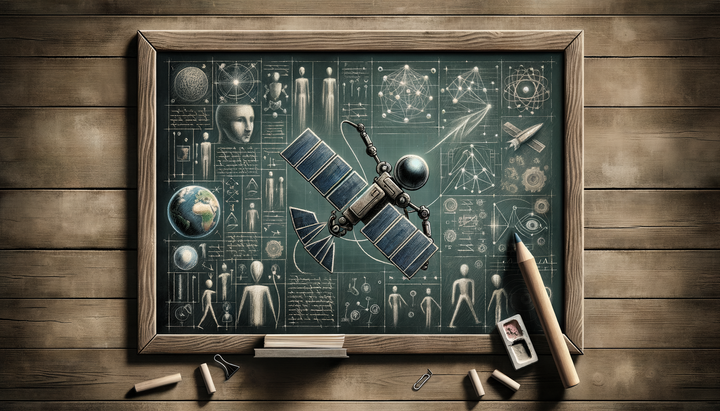AI Updates: Exploring Ghibli, AI and Artistry

In this exploration of recent advances and innovations within the realm of Artificial Intelligence, we dive into the transformative impact of AI on mundane daily tasks, groundbreaking scientific breakthroughs driven by pioneers like Demis Hassabis, the creative revolution in visual AI through cutting‐edge image generation features, and the strategic melding of chatbot technology with social media platforms. We also shed light on significant market developments that signal a robust investment in AI's future, thereby painting a comprehensive picture of an industry continually revitalized by both practical applications and visionary ambitions.
Enhancing the Everyday: AI in Daily Life
The evolution of AI is not solely defined by futuristic robotics or grandiose industrial applications – it is equally about simplifying the mundane facets of everyday life. A striking example is Google’s Gemini system. Its capabilities, while shrouded in technical mystery, are perfectly illustrated with an anecdote from a simple grocery store self-checkout experience. Rather than tediously counting granola bars one by one, a user captured a quick snapshot of their receipt, and asked Gemini to total the items. This seemingly small act not only streamlines the shopping process but also reflects a broader trend: the powerful potential of AI to optimize routine tasks.
Historically, many early AI assistants often suffered from disappointing performance relative to users’ expectations. This disconnect largely stemmed from a conceptual misunderstanding – many dismissed AI as just another app in the crowded digital marketplace. But as modern AI evolves, the magic lies in its ability to infuse practicality into commonplace activities. Gemini’s use case emphasizes that innovation does not only reside in revolutionary, headline-grabbing projects, but also in addressing everyday inefficiencies. In a manner reminiscent of how electricity transformed household logistics in the early 20th century, AI today is steadily redefining the mechanics of daily living.
The idea that the value of AI is hidden in the everyday is not new. As one expert famously put it,
"The true value of AI may not lie in grandiose promotional campaigns, but rather in addressing precisely those mundane tasks that typically hold no appeal in flashy advertisements."
This perspective is echoed in many discussions across the AI community, where even the simplest digital task becomes a canvas for innovation. For those interested in AI's broader creative trends, you may also wish to explore insights on the evolution of AI art and its influence on human creativity on our AI.Biz site.
A Journey Through Genius: The Story of Demis Hassabis and DeepMind
Transitioning from the micro-world of mundane tasks, the narrative of artificial intelligence frequently rewards us with stories that meld classic human achievement with groundbreaking technological ingenuity. Demis Hassabis, the illustrious CEO of Google DeepMind, embodies this journey impeccably. Starting as a chess prodigy with a taste for strategy and intellectual play, Hassabis’s early fascination with chess set the stage for a lifelong obsession with cognitive processes and artificial intelligence. His ventures into programming at a young age heralded the inception of what would become a transformative era in technology.
The creation of DeepMind in 2010 was nothing short of revolutionary. Acquired by Google in 2014 for a reported $500 million, DeepMind’s innovations have since left an indelible mark on both academia and industry. A highlight of this remarkable journey is AlphaZero, an AI capable of mastering the intricacies of chess through self-play in a matter of hours – a feat that swiftly positioned it above even legendary human grandmasters. This synthesis of human creativity and algorithmic genius underscores the latent potential within artificial intelligence to continuously learn and redefine its own limits.
Arguably the most compelling testament to this evolution came from the breakthrough of AlphaFold2, an AI model developed under Hassabis’s watchful eye. By accurately predicting protein structures in record time, AlphaFold2 is transforming the ways we understand complex biological processes. Its contributions have far-reaching implications, from accelerating drug discovery to facilitating critical research against pressing global health challenges like antibiotic resistance and neurodegenerative diseases. Through AlphaFold2, over two million users across 190 countries have gained access to a resource that converges the worlds of computational power and molecular biology.
During an illuminating lecture at the University of Cambridge, Hassabis illustrated the traditional development of pharmaceuticals – a process often spanning over a decade and consuming billions of dollars – and juxtaposed it with AI’s promise to expedite innovation in mere minutes. The revelations from his journey compel us to reimagine the boundaries of technology. As one might say,
"Innovation is born not merely from the ambition to create smarter machines, but from the relentless pursuit of understanding the human spirit."
Such sentiments reinforce the critical role of AI as a bridge between human intellect and computational precision.
Visual Imagination: AI’s Foray into Image Generation
In the creative domain, AI is quickly reshaping how art and visual storytelling are conceived and consumed. OpenAI’s introduction of enhanced image generation capabilities has sparked a surge of excitement and curiosity. Initially, these features, integrated into ChatGPT through the GPT-4o interface, enabled users to upload and manipulate images seamlessly under paid subscriptions. However, the overwhelming popularity of these capabilities was enough to cause delays for free users—a minor setback that hints at the irresistible allure of visual AI.
OpenAI's CEO, Sam Altman, humorously remarked on the realization that users were far more enthusiastic about image functionalities than expected. This development invites us to consider the broader implications of integrating visual and textual AI tools. In a world where digital interactions are increasingly dominated by multimedia experiences, the ability to generate and edit images on-the-fly is not just a feature – it is a cornerstone of next-generation digital communication. Whether in marketing, education, or entertainment, visual AI is steadily undoing traditional barriers between creativity and technology.
The phenomenon of AI-generated imagery took a particularly enchanting turn when ChatGPT users began experimenting with styles reminiscent of Studio Ghibli. Known for masterpieces like “Spirited Away” and “My Neighbor Totoro,” the whimsical, heartwarming aesthetics of Studio Ghibli struck a chord with many. On social media platforms, users proudly displayed their Ghibli-inspired AI renderings, feeling an almost magical interplay between nostalgia and modern technological prowess. While the trend sparked admiration, it also drew critical commentary from figures like Hayao Miyazaki, one of the founding minds behind Studio Ghibli, who expressed his unease with AI’s encroachment into traditional artistic realms.
This dichotomy – the celebration of creative possibilities versus the apprehension compelled by rapid technological change – mirrors many historical debates where progress has conflicted with cultural preservation. The emerging debate around AI in artistry reflects a larger question: Can technology, in its relentless drive to innovate, preserve the human soul of creative expression? As we witness the fusion of art and technology, it’s imperative to appreciate both the creative inspiration and the practical applications of such technology, recognizing that even amidst playful transformations, there is a thoughtful deliberation on the ethics and implications of digital reproduction.
As I reflect on these developments, I am reminded of the words of Fei-Fei Li, who once said,
"I imagine a world in which AI is going to make us work more productively, live longer, and have cleaner energy."
Although her focus was not solely on visual arts, the sentiment resonates with those who see the blending of technical precision and artistic expression in AI as paving the way for a more enriched society.
Bridging Platforms: The Integration of AI and Social Communication
The interplay between AI and social communication unfolds as yet another fascinating chapter in the broader AI narrative. One standout development comes from X Corporation’s strategic integration of its Grok AI chatbot with Telegram. This collaboration enables users who subscribe to both Telegram Premium and X Premium to interact directly with Grok within their messaging environment. Such seamless integration points to a future where AI is not isolated to standalone applications but is intertwined with the platforms that shape our daily digital interactions.
With substantial backing demonstrated by a $6 billion Series C funding round, X is positioning itself at the forefront of AI-driven engagement. The unveiling of colossal data infrastructure, notably the “Colossus” data center in Memphis housing 200,000 state-of-the-art Nvidia H100 units, emphasizes the strategic importance of computational might in this evolving landscape. By legally and technically merging the social dynamics of platforms like Telegram with the robust functionalities of AI, companies are reimagining how conversations and content dissemination take place in the digital age.
The merge of Grok’s chatbot capabilities with a globally recognized messaging platform also brings attention to the ideological undercurrents that underpin social media today. Certain user groups, having experienced shifts on mainstream platforms, now find a familiar frontier in Telegram—a space where AI-powered dialogue might offer them both novelty and continuity. Whether Grok will become a universally embraced tool or remain a niche feature in a segmented digital ecosystem is yet to be determined, but its appearance underscores the ever-expanding role of AI in facilitating real-time, personalized communication.
This integration invites us to reimagine the boundaries of interactive technology. By merging convenience with advanced AI functionalities, companies are set to redefine the very landscape of online interaction. As Nick Bostrom once provocatively stated,
"Machine intelligence is the last invention that humanity will ever need to make."
While there’s certainly debate about this notion, the convergence of AI with everyday communication interfaces supports the view that the true revolution lies in making technology seamlessly interwoven with our daily narratives.
Market Dynamics and Strategic Alliances: Betting on AI’s Enduring Demand
Beyond the realms of everyday tasks and creative reinventions, significant market movements signal investor confidence in the future of AI. Recent reports highlight moves such as the CoreWeave IPO—a bold gamble that anticipates a sustained, robust demand for AI-driven services and infrastructure. Even though detailed public commentary on the specifics remains scarce, CoreWeave’s offering marks an important milestone in the monetization and industrialization of AI. It suggests that both private enterprises and public markets increasingly perceive AI not just as a technological tool, but as a fundamental driver of future economic activity.
Similarly, strategic partnerships continue to emerge in the competitive landscape. The collaboration between Anthropic and Databricks, for instance, reflects a scramble for AI revenue in an increasingly crowded marketplace. These alliances underline the notion that, as AI technologies mature, their economic potential becomes intertwined with strategic business decisions. Such partnerships are not merely about sharing technology or data; they represent a broader consensus that synergy across specialized fields can accelerate innovation, drive down costs, and ultimately deliver solutions that are accessible to a wider audience.
As the markets respond to these pioneering moves, it becomes evident that the AI revolution is not exclusive to research laboratories and tech corridors—it is actively reshaping financial strategies and investment patterns. This dynamic scenario reinforces the view that AI’s impact is multifaceted, influencing not just how we work and communicate, but also how industries structure their future growth.
The Broader Perspective: Embracing AI’s Diverse Impacts
What unifies these seemingly disparate threads is the undeniable trend of AI becoming a transformative force across every domain of life. From the quaint innovations that streamline our daily routines to monumental breakthroughs that redefine scientific research, the continuous integration of AI is, in essence, a reassessment of what technology can achieve when properly harnessed.
Despite diverse applications, a recurring challenge persists: the perception of AI as a monolithic tool rather than as an adaptable, multifaceted partner. Whether in mundane instances like tallying grocery receipts with Gemini or in the sophisticated realms of protein folding and image synthesis, the full spectrum of AI’s applicability is best realized when we look past its surface-level complexities. The true essence of AI’s value lies in its ability to augment human potential and to do so by taking on tasks both trivial and transformative.
This brings to mind the classic narrative of progress where every technological leap, from the printing press to the internet, was initially greeted with skepticism—as if its multifarious potential could be summarized in a single moment of awe. Today’s AI sector is at a similar crossroads; it challenges us to reframe our understanding of technology not as a replacement for human ingenuity, but as a tool that empowers us to evolve beyond current limitations.
For those who have followed previous discussions on the societal and professional impacts of AI, such as our coverage on the subtle yet pervasive influence on creative industries and job functions available on our posts The Mysterious Power of AI and Bill Gates Sees AI Replacing Key Professions, it is clear that the journey is far from over. Just as historical milestones in technology have redefined the human condition, today’s AI advancements compel us to look forward with cautious optimism and responsible curiosity.
In reflecting on the rapid pace of innovation, I recall the words that resonate with both the promise and the caution required as we forge ahead: while some experts have pointed out that “the machines rose from the ashes of the nuclear fire,” others advocate for a balanced integration of AI into our lives. The future, then, may be one where AI is not merely an appendage to human effort, but a true partner in creativity, productivity, and progress.
As we observe AI’s expanding footprint—from personal assistants and creative tools to strategic industry partnerships and market bets—the overarching narrative is one of incremental yet transformative change. Much like the turning of a page in a classic novel, every chapter in the AI story invites us to reimagine what is possible when human ingenuity meets machine precision.
It is a landscape where every innovation, every integration, and every strategic bet not only redefines industry standards but also prompts us to think critically about the role and promise of AI in our collective future.
Further Readings
For additional insights into the ongoing evolution of AI, consider exploring our recent articles on the transformation in AI art and human creativity here, a deeper analysis of AI’s societal impact here, and reflections on the balance between professional innovation and creative integrity here. You might also enjoy our feature on AI-generated narratives that celebrate the interplay of creativity and technology here.



Comments ()